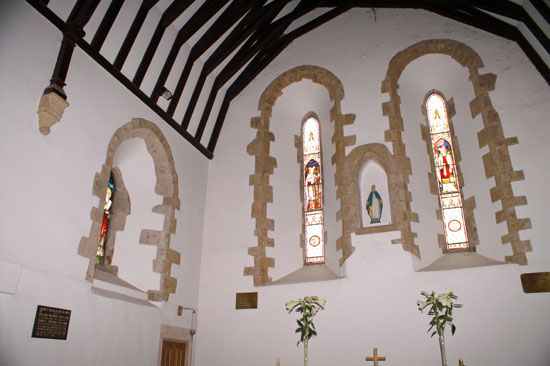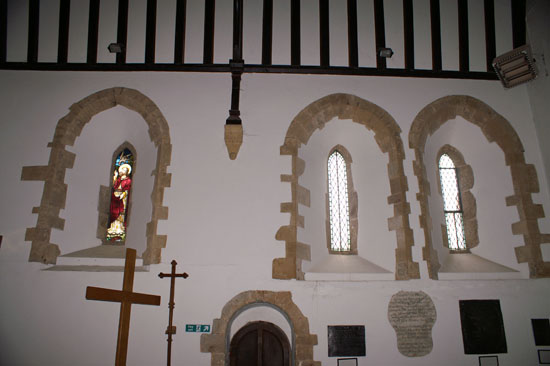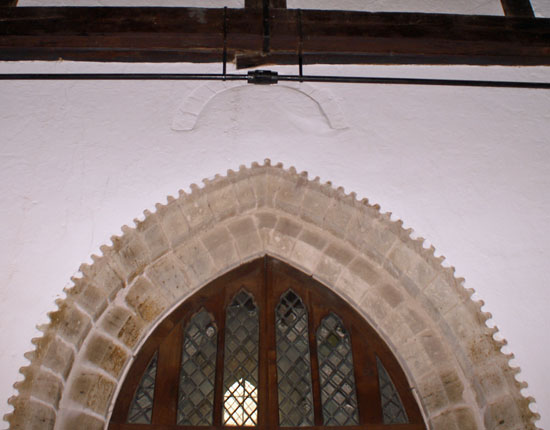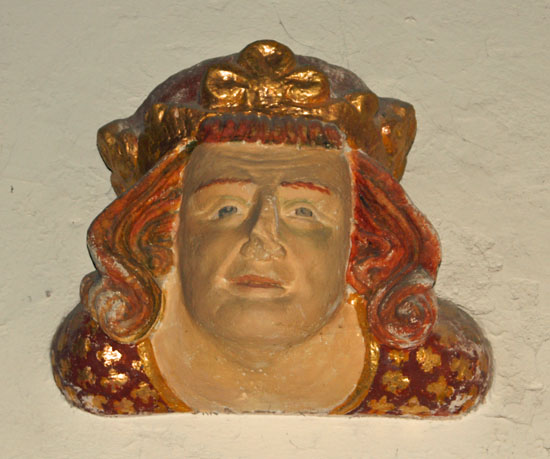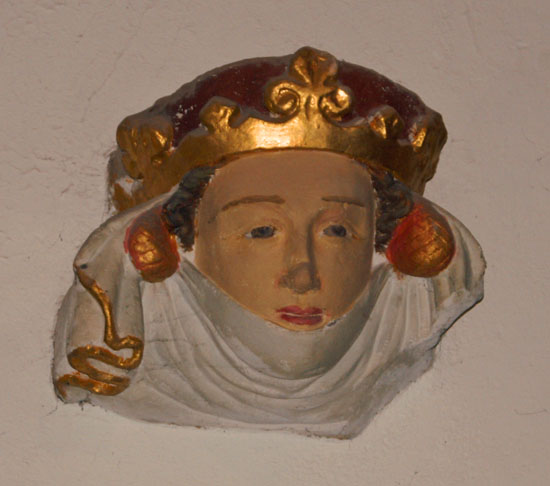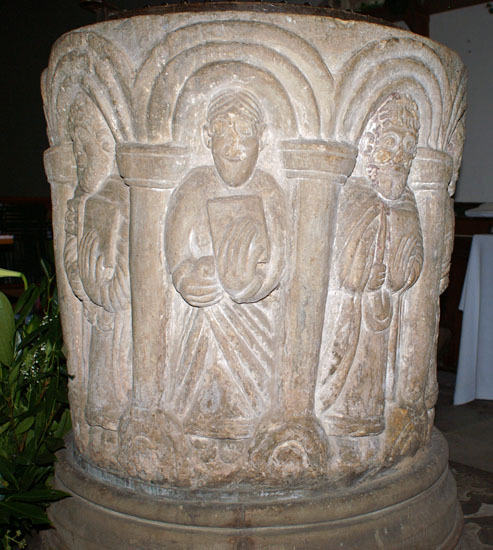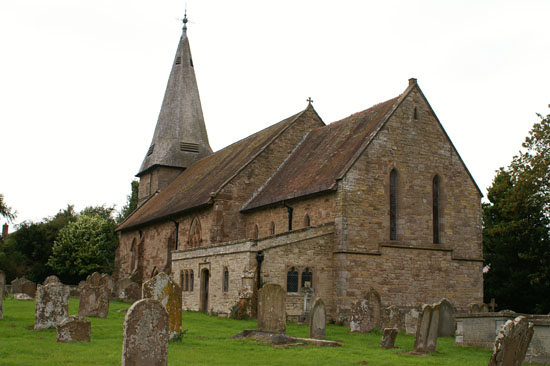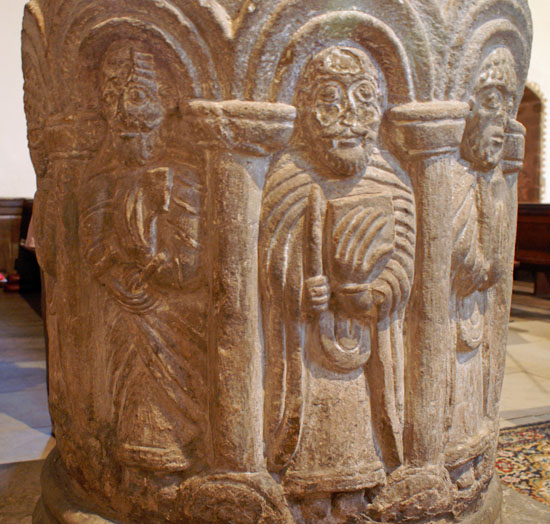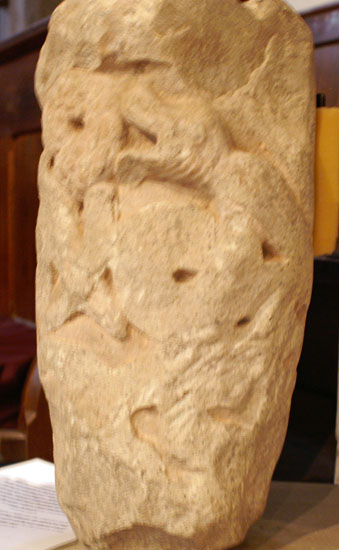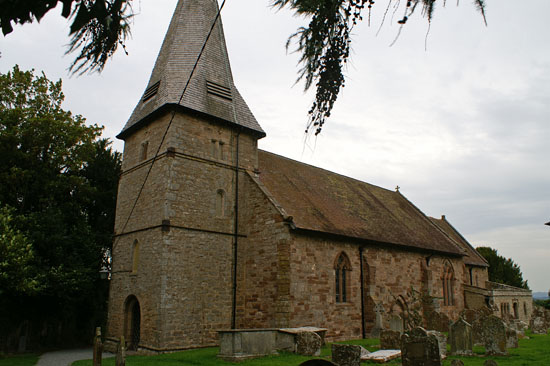|
I suppose Orleton is what I call the “Single Treasure Churches” and, as in so many cases, that treasure is a Norman font, of which I am inordinately fond. Orleton, however, also has a fine chancel rebuilt in Early English style in the early c13 (and restored in c19) with the distinctive tall lancet windows of that period.
Malcolm Thurlby’s book “The Herefordshire School of Romanesque Sculpture” had Orleton as an Addendum. Although he finds some expert clues on the font decoration that link it to the Herefordshire School, he believes that it is a rather crude example - and for my part I was surprised that it was seen as being of that school. See Eardisley and Chaddesley Corbett, for example. However, in recent years a carved shaft that was formerly in the safe keeping of Hereford Catherdral has been restored to the church and from it Thurlby is able to conclude that the church was probably under the patronage of Hugh de Mortimer and his steward Oliver de Merlimond - whose churches were very much of The Herefordshire School. Moreover, he believes that the font was therefore carved after 1143 when de Merlimond had left the service of Mortimer.
The nave walls are the original Norman but you wouldn’t really know it. The tower is c13, despite having a round-headed west door and south window. A filled-in Norman window over the tower arch does not relate to the tower.
|

